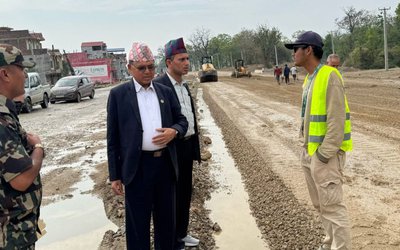The civilizations of the two valleys of the Kathmandu valley and the Brahmaputra of Assam are notable for their significant contributions to art, culture, religion, and literature. Both are important centers of trade and commerce, facilitating interactions between India, Southeast Asia, and Tibet. The region played a role in the spread of Buddhism and Hinduism and was home to various dynasties and rulers who left their mark on its history. The purpose of this article is to explore the possibilities to reconnect these two civilizations through research-based studies on the legacy of Matsyendranath.
The Matsyendranath Chariot Festival, also known as the "Rato Machhindranath Jatra," is a traditional religious and cultural festival celebrated primarily in the Kathmandu Valley of Nepal. It is one of the oldest and most significant festivals in the region and holds immense importance in the Newar community. The festival, possibly the longest chariot festival in the world, lasts for several weeks, with the exact timing varying each year based on astrological considerations and traditional calendars. It usually takes place during the months of April to June, which coincide with the pre-monsoon season. It brings together people from different communities, providing an opportunity for social interactions and cultural exchanges. The festival reflects the syncretic nature of Nepali society, where Hindu and Buddhist traditions often coexist harmoniously.
The background:
The purpose of this presentation is to explore the possibilities of re-connecting with the historical evidence of the missing links between Assam and Nepal in regard with Matsyendranath. Several major points are central to understanding fundamental dynamics which are reiterated in the legacy of Matsyendranath in Nepal and the other myths associated with it.
The prolonged draught in Nepal
During the reign of Narendradeva, Nepal suffered a terrible drought. For twelve years there was no rain, and the husk had no seeds. Narendradeva learned the cause of the drought from Bandhudatta, a tantric of Kathmandu, who told him it was because the naga snake god responsible for rain was being held captive by Gorakhnath. Gorakhnath's motive for doing this is said to be his anger over his bad reception in Nepal or his hope to force his guru Matsyendranath to come. from his retreat so he can meet him.
Quest for solution
Bandhudatta informed the king that the only way to get Gorakhnath to release the nagas was to bring his guru Matsyendranath, to Nepal from Kamarup. Narendradeva enlisted the assistance of Bandhudatta, a powerful tantric, and Lalita Jyapu to come with him on the expedition to bring Karunamaya back.
Journey from Nepal to Assam
Upon reaching Kamarup, they faced the royal parents of Matsyendranath, also known as Karunamaya among his devotees in Nepal, was the youngest of King Shasi’s 500 sons. Bandhudatta used his tantric magic and after asking the snake to be small, put the snake in the king's stomach, after which the king fell ill. The king promised to give Bandhudatta if he could cure him, and he did, but the mother still refused to accept their request to take Karunamaya with him. Bandhudatta realized that the queen was chasing them and decided to turn Karunamaya into a Kalash so they could escape more easily.
The escape and chase
The qeen caught up with them, however, and only agreed to allow the party to continue to Nepal if Matsyendranath would be the guardian deity of the country, and if they would sow the seeds of sal trees along their way to show Karunamaya the path back home. Having agreed, both parties proceeded together toward the valley, and parted at its edge, with Bandhudatta and his party offering the queen and her retinue many gifts.
The return and disputes
Upon their returned to the valley, when the procession reached the place where Gorakhnath was meditating, he stood up to show respect to his guru, releasing the dragons which then flew into the sky, causing rain to fall. The procession then proceeded to Patan, where Bandhudatta, Lalit Jyapu, and Narendradeva discussed whether to establish a rath jatra for Karunamaya. Narendradeva insisted that his royal privilege be honored and the jatra of the deity celebrated in Bhaktapur. Lalita Jyapu protested that he had finished all the work and therefore the deity should be honored in his city, Lalitpur (Patan). Bandhudatta, from Kathmandu, claimed that his tantric powers made the mission a success, so he had to be carried through Kathmandu. However, it was agreed that the god should stay in Patan.
Conclusion:
There hasn't been significant historical evidence or widely accepted research that establishes a direct link between Assam and Nepal in relation to the figure of Matsyendra. However, assumptions can be made with some general information about Matsyendra and the historical context of the Kamarupa dynasty of Assam, and the Lichchhivi dynasty of Nepal during a period of 650 AD to 1100 AD. It has been become critically important to conduct a research-based study on Matsyendranath in Nepal. If research on historical evidence of events is not continued, several significant consequences have been arisen it will lead to failure to continue researching historical evidence means that valuable information about the past may be lost or forgotten.
(The author is a communication expert)














